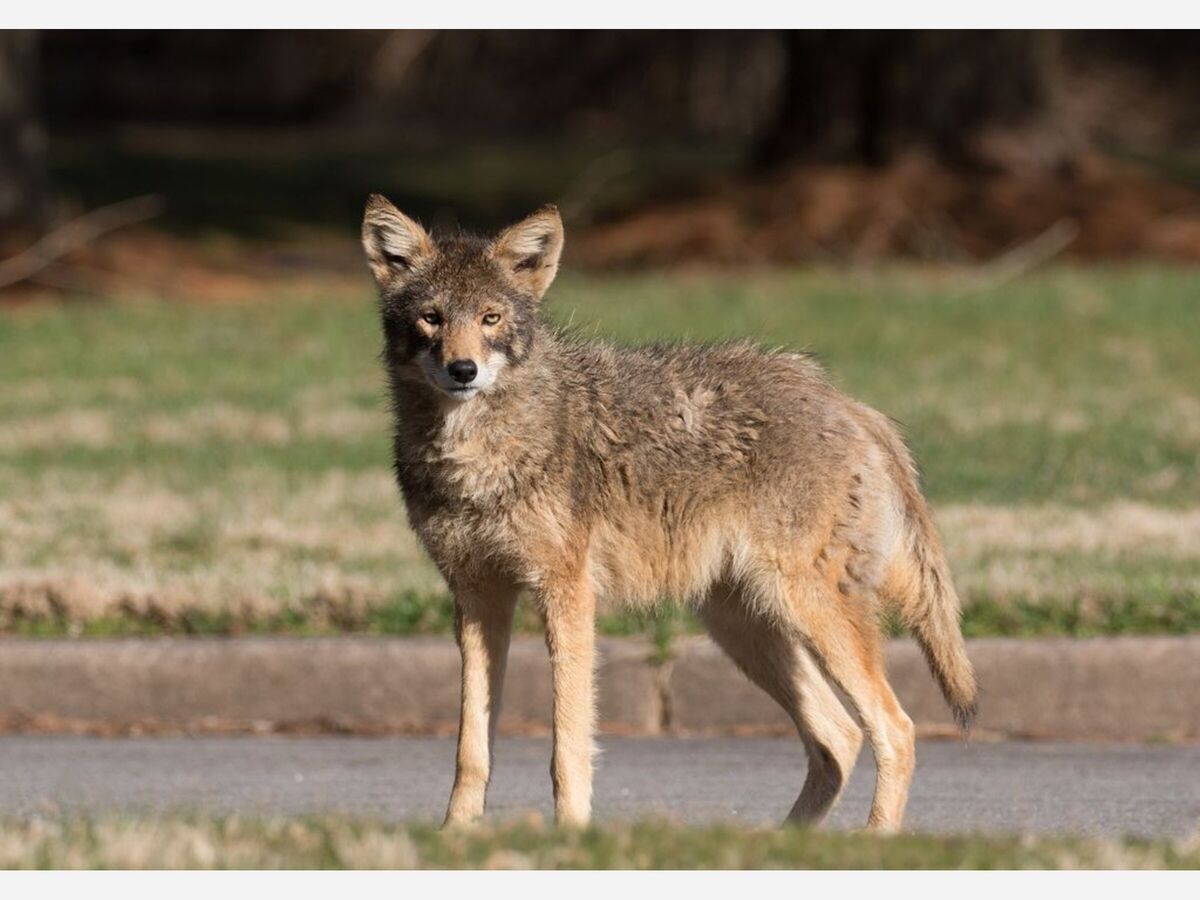Image

Coyotes, like this one seen in Harford County, Md. in 2019, are present in 48 states. Photo: Mark Johnson/Maryland Biodiversity Project
DNR CRACKS DOWN ON COYOTES BROUGHT INTO BAY REGION
Maryland Natural Resources Police (NRP) report two men were recently cited for keeping coyotes in captivity in two separate incidents.
In the first case, 34-year-old Bradley Shelley from Baltimore County had a coyote in his possession that he received from a Pennsylvania man. It was turned over to Baltimore County Animal Control. The Pennsylvania Game Commission informed NRP i early July that Steven Keill II, also 34, brought the coyote across state lines where Shelley took possession of it. Shelley, who lives in Parkton, Md., was issued a citation for possessing or transporting a rabies vector species, and two warnings for importing a rabies vector species and failing to obtain a captive wildlife permit. He faces up to $1,500 in fines.
Charges against Keill are still pending.
In the second incident, police were tipped off that a 26-year-old man from Carroll County, Md. was keeping a coyote and multiple raccoons in captivity. Jake West Quante, who lives in Manchester, admitted to police he’d had a coyote but shot it because it had started to self-mutilate in the cage where he kept it. He also said he had released the raccoons.
Police issued Quante two citations for possessing or transporting a rabies vector species, one for each animal. Hee faces up to $3,000 in fines. He was also given four warnings, for importing a rabies vector species, failing to obtain a captive wildlife permit, possessing a raccoon or opossum without a permit, and possessing a raccoon during a closed season.
Were the two incidents total coincidence? Is there any common motivation to keep a coyote in captivity? The Department of Natural Resources doesn’t know, but biologists say definitively, “it is a bad idea across the board.”
DNR Wildlife Biologist Josh Tabora tells Bay Bulletin, “Wildlife species have complex and demanding needs to be properly cared for, and are best left in their natural habitat in order to thrive. Even in cases where an animal has been abandoned or injured, it is best to rely on professional wildlife rehabilitators to evaluate and treat individual cases.”
Coyotes have occurred in the Chesapeake Bay region for 50 years. They moved eastward as populations of other large predators, like the red wolf, declined. Maryland and Delaware were the last two of the lower 48 states to be colonized by coyotes. The first verified record of one in Maryland was in 1972.
The Maryland Biodiversity Project says that while the highest densities of coyotes are seen in western Maryland, there are records from every Maryland county.
As a highly adaptable species, coyotes can live adjacent to suburban or even urban environments. Tabora says they have settled into a unique niche in the absence of larger predators. If you are having trouble with coyotes or other wildlife species, you can call a federal hotline to reach Nuisance Wildlife Cooperators at (877) 463-6497.
Coyotes are considered a rabies vector species when imported as wild animals because an approved vaccine for them doesn’t exist. While contracting rabies from a coyote is extremely rare, says Tabora, “it is always wise to maintain a safe distance from wild animals, and to report wildlife that appears to be neurologically compromised (walking in circles, drooling/foaming at the mouth).”
He notes that seeing a coyote or fox during the day doesn’t necessarily mean the animal is sick.
Maryland has annual hunting and trapping seasons for coyotes, which allows DNR to proactively address coyote concerns. The season is also open to the public. Learn more in the agency’s Guide to Hunting & Trapping in Maryland.
-Meg Walburn Viviano, CHESAPEAKE BAY MAGAZINE